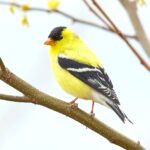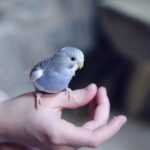Keeping a bird entertained isn’t just about teaching them to talk or whistle. It’s also about providing them with toys that are both safe and fun. Let’s dive deep, feathered friends!
Understanding Bird’s Play Needs
Why Play is Vital
Birds, like humans, thrive on mental and physical stimulation. Play is an essential part of their daily routine, helping them to stay mentally alert and physically active. When deprived of this essential activity, birds can develop various behavioral problems, like the dreaded feather plucking. Think of it this way: no one would enjoy seeing their colorful parrot slowly turning into a nude model, right?
Types of Play
Birds have varied interests and play styles, much like our own diverse hobbies.
- Foraging: In the wild, birds spend a significant amount of their day searching for food. Toys that promote foraging behavior help to replicate this natural activity, giving them a sense of accomplishment when they “find” a treat or toy.
- Chewing: This isn’t just a playful activity. Chewing helps maintain a bird’s beak, ensuring it remains sharp and healthy. While many materials can be used for this, wood remains a perennial favorite among our avian friends.
- Audio: Birds are naturally attracted to sounds. From the songs of other birds to the jingle of a bell, auditory toys can keep them entertained for hours.
- Puzzle: These are the equivalent of Sudoku for birds. Puzzle toys challenge them mentally, promoting problem-solving skills and keeping their brains sharp.
Mental and Physical Benefits
While toys are fun, they aren’t just playthings. They act as tools that cater to a bird’s mental and physical needs. From the mental stimulation provided by puzzle toys to the physical activity of a swing or ladder, toys offer countless benefits. They encourage creativity, problem-solving, and help improve motor skills. It’s similar to how a gym membership helps us humans maintain our fitness; toys are a bird’s ticket to a healthy lifestyle.
Interaction vs. Solitude
While some toys promote solitary play, others are designed to foster interaction. Engaging with your bird using interactive toys strengthens the bond between bird and owner. On the flip side, solitary toys are essential for times when you can’t be around, ensuring they remain entertained. A balanced mix of both types ensures your bird remains well-adjusted and happy.
Types of Safe Materials
Wood
Wood is a favorite for many birds. It’s perfect for those who love to chew and shred. However, always ensure that the wood is untreated, devoid of any chemicals, and is of a type safe for birds.
Plastic
Plastics can be durable and long-lasting, making them suitable for certain toys. However, it’s essential to ensure the plastic is BPA-free and doesn’t have small, breakable parts that can be ingested.
Rope
Ropes are excellent for climbing and swinging. They can also be used in toys that promote preening behavior. But fraying can be an issue, so regular checks are necessary to ensure your bird doesn’t ingest loose fibers.
Natural Materials
Natural doesn’t always mean safe, but materials like hemp, sisal, and coconut shells are typically good choices. They offer a more organic play experience and are often biodegradable, making them eco-friendly options. Always ensure they haven’t been treated with pesticides or other harmful chemicals.
Types of Toys to Avoid
Glue & Adhesives
While they might be great for keeping things together, they’re a strict no-no for bird toys. Many glues and adhesives contain toxic chemicals that can harm your feathered friend. Always check to ensure that toys are free from harmful adhesives.
Metal Toys
Metal might seem durable and long-lasting, but it can pose severe risks. Many metals, such as lead or zinc, can be toxic to birds. If you must choose metal toys, ensure they’re made from stainless steel or other bird-safe materials.
Loose Threads
Loose threads from fabrics or ropes can be a serious hazard. Birds can easily get tangled in them or ingest them, leading to potential health problems. Always monitor any toys with threads and remove them if they start to unravel.
Small Parts
Birds are curious by nature, and they love to pick, prod, and pull. Small parts like beads or bells can easily be ingested, leading to choking or internal blockages. Always opt for toys that are appropriately sized for your bird and monitor for any small parts that might come loose.
DIY Bird Toy Ideas
Foraging Box
Get creative with a simple cardboard box. Fill it with a mix of treats, shredded paper, and other bird-safe items. It’s a fun way for them to “hunt” for their rewards, mimicking their natural foraging behavior.
Rope Ladder
With some sturdy rope and wooden rungs, you can create a fantastic climbing frame for your bird. They’ll love the challenge of navigating the rungs, and it offers them a fun physical activity.
Popsicle Stick Creations
With some non-toxic glue and colored popsicle sticks, the possibilities are endless. Create bridges, ladders, or even little huts. If coloring the sticks, ensure you use bird-safe dyes.
Paper Roll Toys
Empty toilet rolls or paper towel rolls can be a source of endless entertainment. Fill them with treats, cap the ends, and watch as your bird works to retrieve the goodies inside. Or, cut them into rings and string them together for a makeshift toy.
Toy Rotation is Key
Why Rotate?
Imagine having the same set of toys and no new challenges every day – it would become monotonous, wouldn’t it? Birds are no different. Rotating toys ensures they always have something new and exciting to look forward to, keeping their minds sharp and their spirits high.
Signs of Wear and Tear
Like everything, bird toys won’t last forever. It’s crucial to regularly inspect toys for any damage, as splinters, broken parts, or frayed materials can pose risks. A damaged toy isn’t just less fun—it can also be a safety hazard.
Keep it Clean
Cleanliness is paramount when it comes to bird care. Toys can accumulate dirt, food, and even droppings. Over time, bacteria and mold can build up, potentially causing health issues. Ensure you’re cleaning toys regularly with bird-safe disinfectants and giving them a good rinse.
Introducing New Toys
Birds can be a little wary of the unknown, especially if they’re on the shyer side. When introducing a new toy, it’s best to take it slow. Start by placing the toy outside the cage, letting your bird observe and become familiar with it. Once they show interest, move it inside, and monitor their interaction. With time and patience, most birds will come to enjoy their new plaything.
Conclusion
Your avian companion looks to you for love, care, and entertainment. The right toys can make a world of difference in their overall well-being, providing them with the necessary stimulation, exercise, and fun. Always prioritize safety and monitor their playtime, ensuring they’re having a blast and staying healthy.
FAQs
Q: Can I give my bird a mirror?
A: Mirrors can be fascinating for birds, giving them a “companion” to interact with. However, some birds can become obsessed, mistaking their reflection for another bird. This can lead to aggressive behaviors or even depression. It’s advisable to use mirrors in moderation and observe your bird’s reaction to determine if it’s a suitable toy for them.
Q: How often should I replace toys?
A: The frequency of replacement depends on the toy’s material, usage, and your bird’s behavior. If a toy shows signs of excessive wear, it’s time to replace it. Otherwise, observe your bird—if they’ve lost interest in a particular toy, consider rotating it out for something new.
Q: Are cat bells safe?
A: Cat bells, commonly found in pet stores, can be tempting additions to bird toys. However, they might have small parts or materials that aren’t bird-safe. Always ensure any bells or add-ons are large enough to avoid ingestion and made from non-toxic materials.
Q: Can toys be too big?
A: Absolutely! While a large toy might seem like more fun, it can be overwhelming or even dangerous for smaller birds. Ensure the toy is proportionate to your bird’s size, allowing them to play safely without the risk of injury.
Q: How do I introduce a new toy?
A: Take it step by step. Initially, place the new toy outside the cage, allowing your bird to observe from a distance. As they show interest, move it inside. Always monitor their initial interactions to ensure they’re comfortable and safe.





